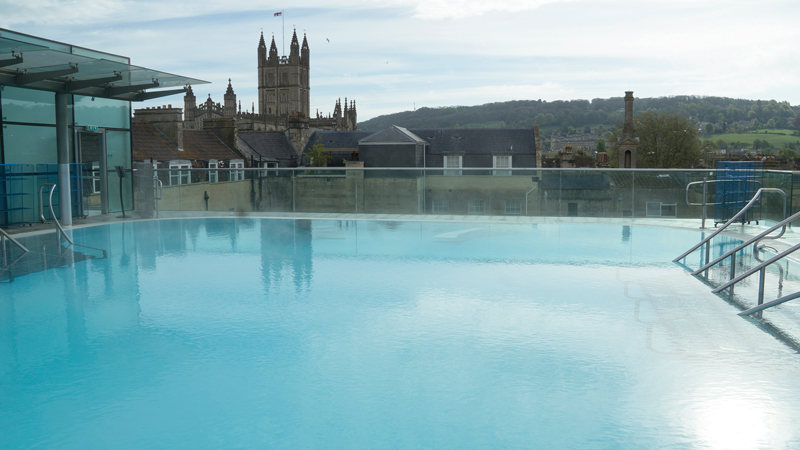Discovering The Great West Way
Eager to explore England’s southwest countryside by following paths commissioned centuries ago by royalty,

I came upon ancient monuments, medieval villages and noble castles from the port of Bristol to the capital of London, the route known today as the Great West Way.
Once a hub for international commercial vessels, Bristol is a trendy, lively, creative port, home to street artists and galleries. Located in the Paintworks Creative Corner are the new Royal Photographic Society and the Martin Parr Foundation for photography. Listings vary for programs at the Bristol Old Vic. At the Watershed, four cinemas, a studio and cafés overlook the Floating Harbor. The museum in the SS Great Britain, one of the most important historic ships in the world, displays designs by the great Victorian engineer, Isambard Kingdom Brunel.
Situated near the 13th century Bristol Cathedral, the Bristol Marriott Royal (www.marriott.com) is a renovated, elegant Victorian hotel. In the Old Town nearby, the St. Nicholas Market is a quirky mélange of food and bric-a-brac stalls. (www.VisitBristol.co.uk)
Two days later I hopped a train at the Bristol Temple Meads Station for a 10-minute ride to Bath.
BATH
At the Royal Crescent Hotel & Spa (www.royalcrescent.co.uk) the healing power of nature started in the luxurious Duke of York suite, which overlooks the Royal Victoria Park. Flowering gardens on paths at the rear lead to the Spa & Bath House and the Dower House, where I couldn’t break from the tradition of “Afternoon Tea,” a creation of the Duchess of Bedford in 1840 as a light repast between luncheon and dinner. My server delivered a tiered tray of savory sandwiches, homemade scones and buns, crescent cookies and heavenly Devon clotted cream, butter, preserves, and a pot of Rooibos tea.
Bath’s naturally warm, 92°-mineral-rich waters have been used by the Celts, Romans, Saxons and Georgians since the ninth century B.C.E. After periods of disuse, The Thermae Development Company restored and opened the spas to the public. Since 2006, the stunning Thermae Bath Spa (www.thermaebathspa.com) has been offering visitors a rooftop pool, wellness suite and pool and a variety of spa treatments.
I taxied back to the Royal Crescent Hotel & Spa for my massage, which included hydration extracts and heated stones. The pool, sauna and herbal steam rooms are available to guests.
Later, Nigel from Around and About Tours (www.aroundandaboutbath.com), a company which focuses on small groups exploring authentic England, drove me through the quintessential English countryside in the Cotswolds, stopping at the quaint Medieval villages of Corsham and Castle Combe before returning to the hotel, where the menu at the Dower House awaited my taste buds.
On my last day in Bath I moved to the charming Abbey Hotel (www.abbeyhotelbath.co.uk), located across from the 7th century Abbey Cathedral. From there I strolled around the honey-colored Bath stone streets and spent hours at the Roman Baths Museum, where I located the 2,000-year-old gilt bronze head of Sulus, the Roman goddess of hot springs.
For supper I dined at Koffmann & Mr. White, an excellent English and French brasserie-style restaurant. My next stop was Wiltshire, an area of outstanding beauty.
Wiltshire
The 100-acre park in Caine designed by “Capability” Brown is home to the Marquess and Marchioness of Lansdowne. At Bowood House, memorabilia are on display on three floors, while jewels from Lord Keith’s participation in the Napoleonic Wars are on the fourth. The boutique-style Bowood Hotel (www.bowood.org) where I stayed offers luxury accommodation, a restaurant, golf course and spa facilities.
I was on the road the following day with Laurence from Oldbury Tours (www.oldbury
tours.co.uk) to Silbury Hill, a massive prehistoric man-made mound. Nearby, the stone circle of Avebury henge is one of the largest ceremonial sites of Neolithic Britain, uncrowded and accessible to the public (www.English-heritage.org.uk). At the Wiltshire Museum in Devizes I met with the Director, David Dawson, who showed me the centerpieces from the award-winning exhibition – gold-studded artifacts from the Bush Barrow – Britain’s richest Bronze Age burial site. (www.wiltshiremuseum.org.uk.) Toward evening I sat on the veranda at a Devizes Marina Lodge apartment drinking prosecco while watching boats rock in the tranquil Kennet & Avon Canal. The Hourglass restaurant provides a sumptuous, varied menu. (www.devizesmarina.com)
Ian Newman from South West Heritage Tours (www.southwestdriverguide.co.uk) and I drove to Stonehenge the following morning. Having once hugged the giant blue stones, all I could do currently was stand at the ropes and enjoy the mysterious ring of upright monoliths.
“It floats!” explained my guide as he inserted a measuring stick into the drain. Salisbury Cathedral was built with nearly 100,000 tons of stone and wood on a foundation only four feet deep. The behind-the-scenes tour included climbing to the tower for a “bird’s eye” view of the Early English Gothic architecture and ended with the library, built in 1445 where 10,000 books including 9th century manuscripts are stored. Before leaving the Cathedral, I visited the Chapter House where one of four original medieval Magna Carta manuscripts is displayed.
Next, I met Roger Blaber at the Salisbury Tourist Information Center for a walk around town, where I learned about Salisbury’s ghostly and ghastly past. Leaving the spirits behind, I settled into a suite on the top floor at the Red Lion Hotel (www.the-redlion.co.uk), ordered a beaker of wine and a king-size portion of fish & chips. I’d head for Reading in Berkshire in the morning.
BERKSHIRE
More than high-tech and IT companies, Reading is home to a large retail center, the oldest pop music festival in England, the ruins of Charles I Reading Abbey and the restored Roseate Reading Hotel (www.roseatehotels.com), the culmination of architectural opulence from the Queen Ann period.
My last stop on the Great West Way was the Marriot Park Lane Hotel, across from Hyde Park in London. In addition to visiting the great monuments, palaces and parks again, I spent hours viewing new exhibits at the British Museum, the National Gallery and the Victoria and Albert Museum.
For more information contact www.visitbritain.com




